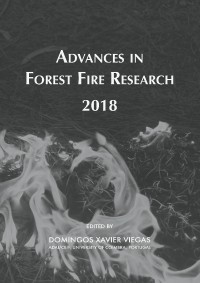Please use this identifier to cite or link to this item:
https://hdl.handle.net/10316.2/44623| Title: | Detecting peatland combustion using shortwave and thermal infrared landsat-8 data | Authors: | Sofan, Parwati Bruce, David Jones, Eriita Marsden, Jackie |
Keywords: | Flaming;smouldering;peatland fires;Landsat-8;remote sensing;SWIR;TIR | Issue Date: | 2018 | Publisher: | Imprensa da Universidade de Coimbra | Journal: | http://hdl.handle.net/10316.2/44517 | Abstract: | Peatland fires occur every year in Indonesia. These fires usually occur in the dry season due to agricultural and plantation expansion practices, which include slash and burn activities. Peatland combustion fires can be classified into smouldering and flaming. Smouldering is described by lower temperatures, spread rates and combustion power compared with flaming. Most of the standard fire products from remote sensing satellites use an apparent fire temperature at 4 μm in the Middle Infrared (MIR) and background temperature at 11 μm in Thermal Infrared (TIR). These products only report combustion in a single term as an “active fire” or “fire hotspot”, and do not discriminate between smouldering and flaming states. In this research, the Shortwave Infrared (SWIR) and TIR bands of day-time Landsat-8 were explored to discriminate smouldering and flaming states of peatland combustion. Initial identification of possible combustion areas was from visual observation of false colour composite images (bands 764 to RGB) of Landsat-8, which presented smoke plumes in pale bluish tones emanating from a defined ground location. The potential combustion areas were further investigated using an implementation of the Hyperspectral Fire Detection Index based on SWIR of Landsat-8 and named here as the Shortwave Infrared Combustion Index (SICI). Potential combustion areas were also analysed using radiances of the SWIR (band 7) and TIR (band 10), which exhibited values close to their saturation. From these radiances, a radiative transfer model using MODTRAN4 and Planck’s law, the fire temperatures were estimated. Preliminary results showed that the flaming states, with higher temperatures than smouldering states, are coincident with SWIR radiances near saturation (24 - 29 Wm-2sr-1μm-1 for band 7) and TIR (band 10) > 12 Wm-2sr-1μm-1, while smouldering states, with lower temperatures, occur near flaming areas with lower SWIR radiance and TIR radiance above 11 Wm-2sr-1μm-1. Based on Landsat-8 imagery on 3rd and 19th August 2015, fire temperatures of flaming areas were estimated at 700 - 758 K, mixtures of flaming and smouldering at 500 - 665 K, and smouldering at 320 - 499 K. This result aligned with prior research that sampled in situ smouldering, smouldering close to flaming, and flaming temperatures taken from Indonesian peatland. The algorithm developed in the research reported here was able to map some combustion areas that could not be mapped using lower spatial resolution imagery from MODIS. However, the results will undergo further investigation for atmospheric influence such as haze and thin cloud. Results also will be validated with other data such as field measurements. The algorithm developed in this research has potential to be used on a routine basis due to the availability of day-time Landsat-8 data which, at best, has a temporal resolution of 16 days. It can also be implemented for forest fire detection at a detailed scale to complement other fire information, but again temporal resolution is an issue. This research is part of a larger project which is utilising automated smoke detection and soil moisture measurement in the mapping of peatland combustion from space imagery. | URI: | https://hdl.handle.net/10316.2/44623 | ISBN: | 978-989-26-16-506 (PDF) | DOI: | 10.14195/978-989-26-16-506_106 | Rights: | open access |
| Appears in Collections: | Advances in forest fire research 2018 |
Files in This Item:
| File | Description | Size | Format | |
|---|---|---|---|---|
| detecting_peatland_combustion_using_shortware.pdf | 1.74 MB | Adobe PDF |  |
Items in DSpace are protected by copyright, with all rights reserved, unless otherwise indicated.
